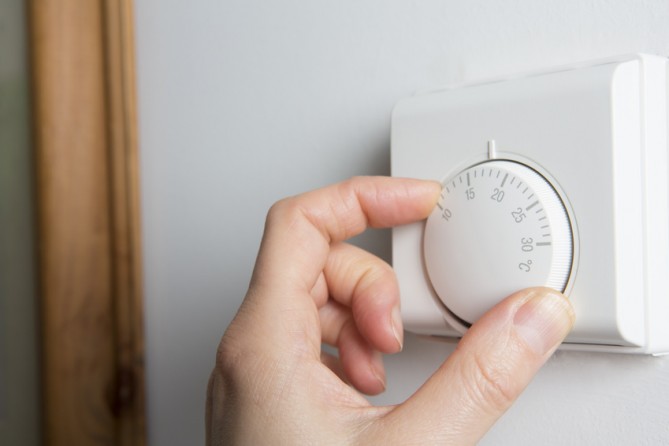


In order to heat your home in a way that saves energy, the first thing to do is make sure the heating system operates efficiently. For modern condensing boilers this means burning at full pelt on the odd occasion, without briefly firing up every so often to make up for just one degree. To this end, set the thermostat in such a way that it will drop to a lower temperature when you are not at home. Some guidelines:
| Please note: If you have underfloor heating or low-temperature heating, other rules apply! |
16°C is a good night-time temperature. In a properly insulated new-build home, temperatures will rarely drop below this level. Which means the boiler is not likely to self-activate. In addition, the leap from 16°C to reach 21°C is small enough to make sure the home gets up to a comfortably warm temperature quite quickly in the morning.
When you leave home to go to work during the day, 16°C is a good guide temperature. Whatever you do, make sure you keep the temperature above 10°C to prevent condensation. It is not just the air, but also the items inside the room that cool down. As long as these items have not been heated up themselves, they give off cold, which has a negative impact on your sense of comfort.
If you are going to be away from home for a longer length of time, make sure the temperature is set low enough so the boiler does not need to fire up very often, and high enough to prevent condensation: 14° or even down to 12°C. When the boiler is required to heat the dwelling back up to 21°C, it will do so with high efficiency.
These kinds of temperature regimes can be achieved only if you have a room thermostat with day and night settings or a clock thermostat. These thermostats can be set in such a way that they will act as programmed at the times set:
• 30 minutes before you get up in the morning: raise the temperature to comfort level
• 15 minutes before you leave home: switch the heating to the low temperature regime
• 30 minutes before you get home: heat up the house again to reach comfort temperature level
• 30 minutes before you go to bed: reduce the temperature again to the night-time regime
For underfloor heating, the thermostat has to be set differently. Underfloor heating is somewhat slower than a system with radiating heat. It will take longer to heat up the room. But once the chosen temperature has been reached, it requires virtually no energy to keep it constant. Here are some rules of thumb:
Subscribe to our newsletter and stay informed about energyfacts.